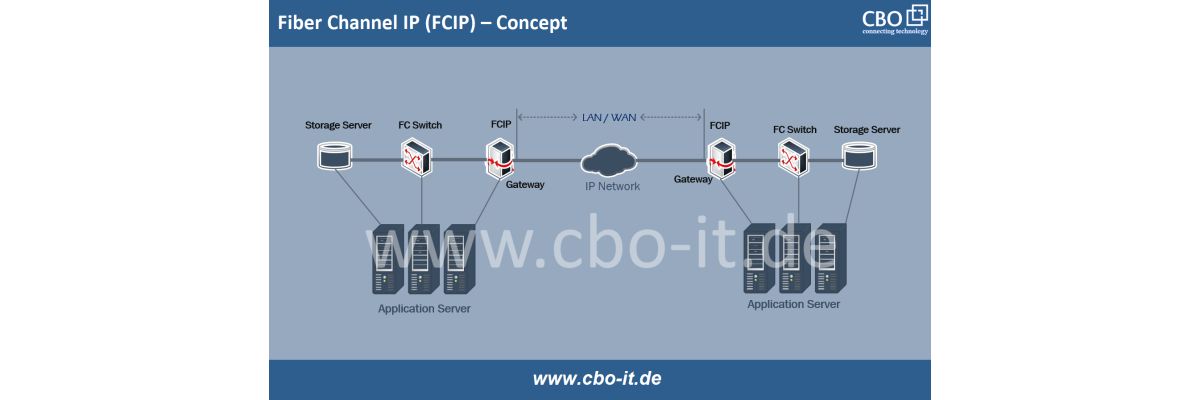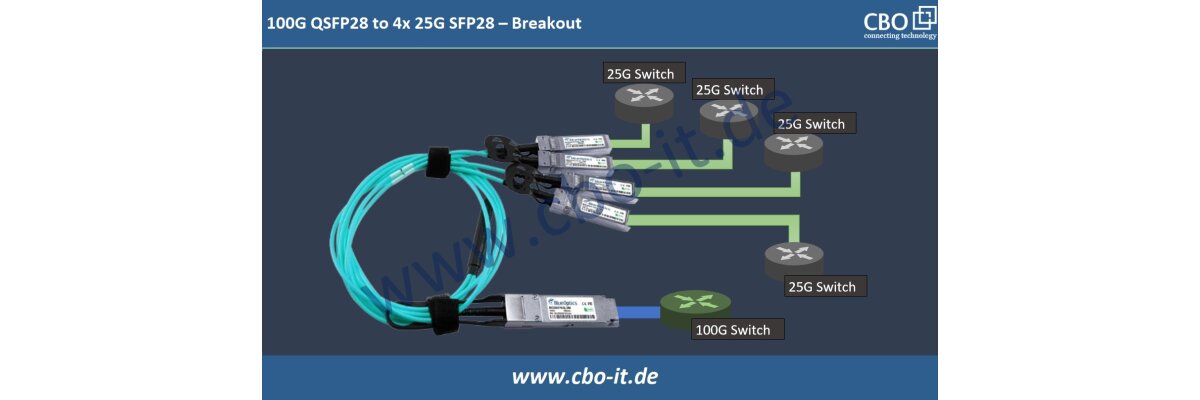When designing and maintaining an Optical Fiber Network it’s crucial to know the various features and properties of the optical network equipment. When selecting the appropriate equipment for a particular project it’s important to consider all possible options. For example selecting the correct cables for the optical networks is not the same process for copper cables and optical cables. This is due to their different manufacturing processes, their functioning and characteristics.
The American Wire Gauge or AWG represents an extremely important parameter when choosing the correct Direct Attach Cables. The American Wire Gauge is a standard method of denoting round and solid, electrically conducting capacity of a cable. Its use started in 1857 and it was used primarily in the United States and later as the years went by the rest of the world started using it. To make things clearer, the higher the AWG number, the smaller the cable is in diameter and the thinner the wire inside of it. This is very important to know, keeping in mind that thicker wires have a higher capability of transmitting larger amount of current over greater distances accompanied with minimal loss. Generally the smallest AWG size is 40 AWG and the largest is 0000 or (4/0) AWG. The various AWG sizes and each of its properties is shown in the around the world accepted AWG size and properties table:
|
AWG gauge |
Conductor Inches |
Conductor mm |
Ohms per 304.8 meter (1000ft.) |
Ohms per km |
Maximum amps for |
Maximum amps for |
Maximum frequency |
Breaking force Soft |
|
0000 |
0.46 |
11.684 |
0.049 |
0.16072 |
380 |
302 |
125 Hz |
2776 kg |
|
000 |
0.4096 |
10.40384 |
0.0618 |
0.202704 |
328 |
239 |
160 Hz |
2205 kg |
|
00 |
0.3648 |
9.26592 |
0.0779 |
0.255512 |
283 |
190 |
200 Hz |
1751 kg |
|
0 |
0.3249 |
8.25246 |
0.0983 |
0.322424 |
245 |
150 |
250 Hz |
1388 kg |
|
1 |
0.2893 |
7.34822 |
0.1239 |
0.406392 |
211 |
119 |
325 Hz |
1102 kg |
|
2 |
0.2576 |
6.54304 |
0.1563 |
0.512664 |
181 |
94 |
410 Hz |
875 kg |
|
3 |
0.2294 |
5.82676 |
0.197 |
0.64616 |
158 |
75 |
500 Hz |
694 kg |
|
4 |
0.2043 |
5.18922 |
0.2485 |
0.81508 |
135 |
60 |
650 Hz |
549 kg |
|
5 |
0.1819 |
4.62026 |
0.3133 |
1.027624 |
118 |
47 |
810 Hz |
435 kg |
|
6 |
0.162 |
4.1148 |
0.3951 |
1.295928 |
101 |
37 |
1100 Hz |
345 kg |
|
7 |
0.1443 |
3.66522 |
0.4982 |
1.634096 |
89 |
30 |
1300 Hz |
274 kg |
|
8 |
0.1285 |
3.2639 |
0.6282 |
2.060496 |
73 |
24 |
1650 Hz |
217 kg |
|
9 |
0.1144 |
2.90576 |
0.7921 |
2.598088 |
64 |
19 |
2050 Hz |
172 kg |
|
10 |
0.1019 |
2.58826 |
0.9989 |
3.276392 |
55 |
15 |
2600 Hz |
142 kg |
|
11 |
0.0907 |
2.30378 |
1.26 |
4.1328 |
47 |
12 |
3200 Hz |
113 kg |
|
12 |
0.0808 |
2.05232 |
1.588 |
5.20864 |
41 |
9.3 |
4150 Hz |
89 kg |
|
13 |
0.072 |
1.8288 |
2.003 |
6.56984 |
35 |
7.4 |
5300 Hz |
68 kg |
|
14 |
0.0641 |
1.62814 |
2.525 |
8.282 |
32 |
5.9 |
6700 Hz |
54 kg |
|
15 |
0.0571 |
1.45034 |
3.184 |
10.44352 |
28 |
4.7 |
8250 Hz |
42 kg |
|
16 |
0.0508 |
1.29032 |
4.016 |
13.17248 |
22 |
3.7 |
11 k Hz |
34 kg |
|
17 |
0.0453 |
1.15062 |
5.064 |
16.60992 |
19 |
2.9 |
13 k Hz |
27 kg |
|
18 |
0.0403 |
1.02362 |
6.385 |
20.9428 |
16 |
2.3 |
17 kHz |
21 kg |
|
19 |
0.0359 |
0.91186 |
8.051 |
26.40728 |
14 |
1.8 |
21 kHz |
16 kg |
|
20 |
0.032 |
0.8128 |
10.15 |
33.292 |
11 |
1.5 |
27 kHz |
13 kg |
|
21 |
0.0285 |
0.7239 |
12.8 |
41.984 |
9 |
1.2 |
33 kHz |
10.5 kg |
|
22 |
0.0253 |
0.64516 |
16.14 |
52.9392 |
7 |
0.92 |
42 kHz |
8 kg |
|
23 |
0.0226 |
0.57404 |
20.36 |
66.7808 |
4.7 |
0.729 |
53 kHz |
6.5 kg |
|
24 |
0.0201 |
0.51054 |
25.67 |
84.1976 |
3.5 |
0.577 |
68 kHz |
5 kg |
|
25 |
0.0179 |
0.45466 |
32.37 |
106.1736 |
2.7 |
0.457 |
85 kHz |
4 kg |
|
26 |
0.0159 |
0.40386 |
40.81 |
133.8568 |
2.2 |
0.361 |
107 kHz |
3.2 kg |
|
27 |
0.0142 |
0.36068 |
51.47 |
168.8216 |
1.7 |
0.288 |
130 kHz |
2.5 kg |
|
28 |
0.0126 |
0.32004 |
64.9 |
212.872 |
1.4 |
0.226 |
170 kHz |
2 kg |
|
29 |
0.0113 |
0.28702 |
81.83 |
268.4024 |
1.2 |
0.182 |
210 kHz |
1.5 kg |
|
30 |
0.01 |
0.254 |
103.2 |
338.496 |
0.86 |
0.142 |
270 kHz |
1.2 kg |
|
31 |
0.0089 |
0.22606 |
130.1 |
426.728 |
0.7 |
0.113 |
340 kHz |
1 kg |
|
32 |
0.008 |
0.2032 |
164.1 |
538.248 |
0.53 |
0.091 |
430 kHz |
800 gr |
|
Metric 2.0 |
0.00787 |
0.200 |
169.39 |
555.61 |
0.51 |
0.088 |
440 kHz |
|
|
33 |
0.0071 |
0.18034 |
206.9 |
678.632 |
0.43 |
0.072 |
540 kHz |
589 gr |
|
Metric 1.8 |
0.00709 |
0.180 |
207.5 |
680.55 |
0.43 |
0.072 |
540 kHz |
|
|
34 |
0.0063 |
0.16002 |
260.9 |
855.752 |
0.33 |
0.056 |
690 kHz |
498 gr |
|
Metric 1.6 |
0.0063 |
0.16002 |
260.9 |
855.752 |
0.33 |
0.056 |
690 kHz |
|
|
35 |
0.0056 |
0.14224 |
329 |
1079.12 |
0.27 |
0.044 |
870 kHz |
417 gr |
|
Metric 1.4 |
.00551 |
.140 |
339 |
1114 |
0.26 |
0.043 |
900 kHz |
|
|
36 |
0.005 |
0.127 |
414.8 |
1360 |
0.21 |
0.035 |
1100 kHz |
326 gr |
|
Metric 1.25 |
.00492 |
0.125 |
428.2 |
1404 |
0.20 |
0.034 |
1150 kHz |
|
|
37 |
0.0045 |
0.1143 |
523.1 |
1715 |
0.17 |
0.0289 |
1350 kHz |
258 gr |
|
Metric 1.12 |
.00441 |
0.112 |
533.8 |
1750 |
0.163 |
0.0277 |
1400 kHz |
|
|
38 |
0.004 |
0.1016 |
659.6 |
2163 |
0.13 |
0.0228 |
1750 kHz |
204 gr |
|
Metric 1 |
.00394 |
0.1000 |
670.2 |
2198 |
0.126 |
0.0225 |
1750 kHz |
|
|
39 |
0.0035 |
0.0889 |
831.8 |
2728 |
0.11 |
0.0175 |
2250 kHz |
163 gr |
|
40 |
0.0031 |
0.07874 |
1049 |
3440 |
0.09 |
0.0137 |
2900 kHz |
131 gr |
Even though there are so many different AWG sizes within the AWG standard, not all of them are used in practical applications. From a computer networking perspective the mostly used AWG sizes are:
- 18 and 20 AWG - coaxial cables used mainly for CATV
- 24 AWG - Category 5, 5e and 6 cables used mainly for Local Area Networks and Ethernet
- 24, 26, 28 and 30 AWG - Direct Attach Cables used mainly in Datacenter environment and interconnections
Direct Attach Cables used mainly in Datacenters are a form of high speed cables with transceivers incorporated on each end of the cable. These cables are widely popular around the world mainly because of the price difference compared with regular transceivers. There are two types of Direct Attach Cables existing: active and passive. Even though some may argue, there is no particular weight and appearance between the two types. The key difference between active and passive DACs is the integration of a driving chip in the active Direct Attach Cables. Other difference is their AWG rating. For example active Direct Attach Cables generally have lower AWG rating than passive Direct Attach Cables meaning that, for example, DAC 30 is thinner than DAC 24 and therefore more convenient for deployment at greater distances. Lower AWG rating also guarantees bigger electromagnetic shielding. When choosing DACs the longer the distance the lower the AWG value should be.
Direct Attach Cables are cheaper than the regular optics because of their transceiver connectors attached at each end. These transceivers are used only for transmitting the optical light and they don’t have the regular optical components inside of them. Thus they provide a budget solution for short range connections.
 English
English
 Deutsch
Deutsch
 Espaniol
Espaniol










